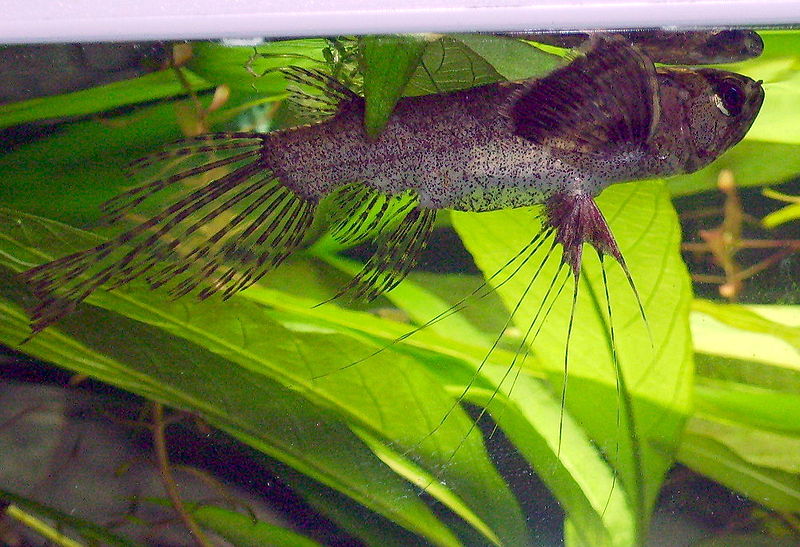Hello, Frank Indiviglio here. I have always included insects in the diets of a great many fishes, including shallow-water marine species (in the accompanying photo, you can see a number of typical community aquarium species swarming around a cricket). Please see Part I of this article for further information on the role of insects in marine and fresh water fish diets.
My Experience with Wild Fishes
Whenever I have the opportunity, I toss insects into natural water bodies. Time after time, be I near a quiet pond in Ohio or a salt marsh on Long Island, the insects never last more than a few minutes before being consumed by resident fishes. Eventually, I came to believe that terrestrial invertebrates play a great role in the diets of numerous freshwater, brackish and even marine fishes (many insects fly far out over the ocean, especially on migrations, or are carried there by the wind).
Current Research
Just this month (August, 2009), biologists at the National Oceanographic and Atmospheric Administration published the results of a research effort which addressed this very topic. Surveys of fishes in lakes across North America have revealed that terrestrial insects comprise up to 100% of the diets of some fish species (my own casual observations are rarely validated in such a timely fashion!).
However, in lakes where development has eliminated shoreline vegetation, insects typically make up only 2% of the diets of the same fish species. The importance of insects is evidenced by the fact that fishes living in lakes with developed shorelines take in 50% less energy on a daily basis and grow slower than those in undeveloped lakes. Fortunately, re-planting even a narrow fringe of bushes and grasses along a lake can dramatically increase terrestrial insect populations.
Canned Insects for Aquarium Fishes
Both live and canned insects are eagerly accepted by many typical (and untypical!) aquarium fishes. Canned invertebrates may be better suited for most aquarists, who, unlike their reptile-keeping colleagues, are not often in the habit of maintaining live insect colonies. What’s more, they retain all the nutrition of live insects but are far more convenient to store and use.
Canned grasshoppers and adult crickets are ideal for large carnivorous fishes such as Oscars and other Cichlids, arowanas and many catfishes, and can also be crushed or chopped for smaller species. Other varieties of canned invertebrates include snails, mealworms, silkworms and young crickets . Freshwater shrimp , also available in cans, are eagerly taken by a wide array of fishes.
Further Reading
In some habitats, the availability of “junk food” is reducing the role of insects in fish diets. To learn more, please see http://www.sciencedaily.com/releases/2004/09/040928101517.htm.
Please write in with your questions and comments. Thanks, until next time, Frank Indiviglio.
 That Fish Blog – Aquarium Advice and Information
That Fish Blog – Aquarium Advice and Information

 However, while the sale of live and canned insects to reptile owners has long been a booming business, aquarists have largely disregarded insects as a food source for fishes. Even well-known insect specialists such as African butterfly fishes (please see photo), mudskippers and archer fishes are rarely provided with the invertebrate-rich diets they favor.
However, while the sale of live and canned insects to reptile owners has long been a booming business, aquarists have largely disregarded insects as a food source for fishes. Even well-known insect specialists such as African butterfly fishes (please see photo), mudskippers and archer fishes are rarely provided with the invertebrate-rich diets they favor.